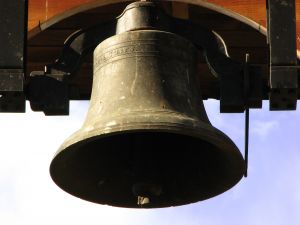R
Although almost all bell ringing takes place in a church of one denomination or another, many pensioners still find it a very sociable and rewarding activity to undertake. It’s also a very good form of exercise and after just a few months of pulling a rope attached to a seven hundredweight lump of metal, many participants have biceps the size of sewer pipes.
Bells are most often used to mark religious festivals, celebrate weddings or announce the cessation of wartime hostilities, but they can also be rung in honour of local achievements, to signal the start of sheep shearing or drown out the irritating noise of the dawn chorus.
There are thousands of different arrangements for ringing bells, and these methods, as they are known, are subject to strict ruling by the Central Council of Church Bell Ringers which has been responsible for all things campanological for more than 500 years.
Among the most common methods are the Triple Bob Major, Grandsire Caters and The High Clapper Minimus, while at the other end of the spectrum, the least performed include Titanic Cinques (inappropriately pronounced ‘sinks’), Percy’s Tea Strainer Treble Place Major and The Slug and Lettuce Happy Hour Doublet and Hose Minor.
The oldest surviving bells which are still rung on a regular basis are those of the 9th century church of St Pamphilius of the Razor in Much Wedlock, Suffolk, where the nine surviving members of the Taylor family perform a Rumbaba and Whisky Chaser Triple on the second Sunday of every month.

